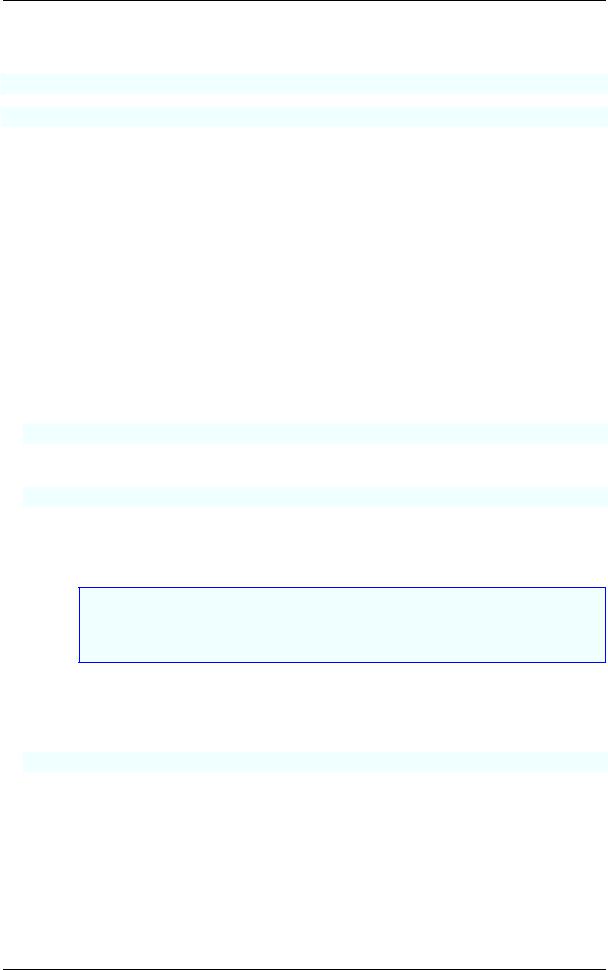
- •Firebird Generator Guide
- •Table of Contents
- •Introduction
- •What is this article about?
- •Who should read it?
- •Generator Basics
- •What is a generator?
- •What is a sequence?
- •Where are generators stored?
- •What is the maximum value of a generator?
- •Client dialects and generator values
- •How many generators are available in one database?
- •Older InterBase and Firebird versions
- •Generators and transactions
- •SQL statements for generators
- •Statement overview
- •Firebird 2 recommended sytax
- •Use of generator statements
- •Dropping generators in old IB and Firebird versions
- •One for all or one for each?
- •Can you re-use generator values?
- •Generators for IDs or auto-increment fields
- •Before Insert trigger, version 1
- •Before Insert trigger, version 2
- •Before Insert trigger, version 3
- •What else to do with generators
- •Using generators to give e.g. transfer files unique numbers
- •Generators to monitor and/or control long-running Stored Procedures
- •Document history
- •License notice

Firebird Generator Guide
And for the DML statements:
SELECT NEXT VALUE FOR <SequenceName> FROM RDB$DATABASE;
<intvar> = NEXT VALUE FOR <SequenceName>;
Currently the new syntax does not support an increment other than 1. This limitation will be lifted in a future version. In the meantime, use GEN_ID if you need to apply another increment value.
Use of generator statements
The availability of statements and functions depends on whether you use them in:
•Client SQL – The language you use when you, as a client, talk to a Firebird server.
•PSQL – The server-side programming language used in Firebird stored procedures and triggers.
Creating a generator (“Insert”)
Client SQL
CREATE GENERATOR <GeneratorName>;
Preferred for Firebird 2 and up:
CREATE SEQUENCE <SequenceName>;
PSQL
Not possible. Since you cannot change database metadata inside SPs or triggers, you cannot create generators there either.
Note
In FB 1.5 and up, you can circumvent this limitation with the EXECUTE STATEMENT feature.
Getting the current value (“Select”)
Client SQL
SELECT GEN_ID( <GeneratorName>, 0 ) FROM RDB$DATABASE;
This syntax is still the only option in Firebird 2.
8

Firebird Generator Guide
Note
In Firebird's command-line tool isql there are two additional commands for retrieving current generator values:
SHOW GENERATOR <GeneratorName>;
SHOW GENERATORS;
The first reports the current value of the named generator. The second does the same for all nonsystem generators in the database.
The preferred Firebird 2 equivalents are, as you could guess:
SHOW SEQUENCE <SequenceName>;
SHOW SEQUENCES;
Please notice again that these SHOW... commands are only available in the Firebird isql tool. Unlike GEN_ID, you can't use them from within other clients (unless these clients are isql frontends).
PSQL
<intvar> = GEN_ID( <GeneratorName>, 0 );
Firebird 2: same syntax.
Generating the next value (“Update” + “Select”)
Just like getting the current value, this is done with GEN_ID, but now you use an increment value of 1. Firebird will:
1.get the current generator value;
2.increment it by 1;
3.return the incremented value.
Client SQL
SELECT GEN_ID( <GeneratorName>, 1 ) FROM RDB$DATABASE;
The new syntax, which is preferred for Firebird 2, is entirely different:
SELECT NEXT VALUE FOR <SequenceName> FROM RDB$DATABASE;
PSQL
<intvar> = GEN_ID( <GeneratorName>, 1 );
Preferred for Firebird 2 and up:
<intvar> = NEXT VALUE FOR <SequenceName>;
Setting a generator directly to a certain value (“Update”)
Client SQL
SET GENERATOR <GeneratorName> TO <NewValue>;
This is useful to preset generators to a value other than 0 (which is the default value after you created it) in e.g. a script to create the database. Just like CREATE GENERATOR, this is a DDL (not
9

Firebird Generator Guide
DML) statement.
Preferred syntax for Firebird 2 and up:
ALTER SEQUENCE <SequenceName> RESTART WITH <NewValue>;
PSQL
GEN_ID( <GeneratorName>, <NewValue> - GEN_ID( <GeneratorName>, 0 ) );
Warning
This is more of a dirty little trick to do what you normally cannot and should not do in SPs and triggers: setting generators. They are for getting, not setting values.
Dropping a generator (“Delete”)
Client SQL
DROP GENERATOR <GeneratorName>;
Preferred for Firebird 2 and up:
DROP SEQUENCE <SequenceName>;
PSQL
Not possible, unless... (Same explanation as with Create: you can't – or rather, shouldn't – change metadata in PSQL.)
Dropping a generator does not free the space it occupied for use by a new generator. In practice this rarely hurts, because most databases don't have the tens of thousands of generators that Firebird allows, so there's bound to be room for more anyway. But if your database does risk to hit the 32767 ceiling, you can free up dead generator space by performing a backup-restore cycle. This will neatly pack the RDB$GENERATORS table, re-assigning a contiguous series of IDs. Depending on the situation, the restored database may also need less pages for the generator values.
Dropping generators in old IB and Firebird versions
InterBase 6 and earlier, as well as early pre-1.0 Firebird versions, do not have a DROP GENERATOR command. The only way to drop a generator in these versions is:
DELETE FROM RDB$GENERATORS WHERE RDB$GENERATOR_NAME = '<GeneratorName>';
...followed by a backup and restore.
In these versions, with the maximum number of generators typically a couple of hundred, it is much more likely that the need will arise to reuse space from deleted generators.
10

Firebird Generator Guide
Using generators to create unique row IDs
Why row IDs at all?
The answer to this question would go far beyond the scope of this article. If you see no need to have a generic, unique “handle” for every row inside a table, or don't like the idea of “meaningless” or “surrogate” keys in general, you should probably skip this section...
One for all or one for each?
OK, so you want row IDs. { author's note: congratulations! :-) }
A major, basic decision to take is whether we'll use one single generator for all the tables, or one generator for each table. This is up to you – but take the following considerations into account.
With the “one for all” approach, you:
•+ need only a single generator for all your IDs;
•+ have one integer number that does not only identify your row within its table, but within the entire database;
•- have less possible ID values per table (this shouldn't really be a problem with 64bit generators...);
•- will soon have to deal with large ID values even in e.g. lookup tables with only a handful of records;
•- will likely see gaps in a per-table ID sequence, since generator values are spread throughout all tables.
With the “one for each” approach you:
•- have to create a generator for every single “ID'd” table in your database;
•- always need the combination of ID and table name to uniquely identify any row in any table;
•+ have a simple and robust “insert counter” per table;
•+ have a chronological sequence per table: if you find a gap in the ID sequence of a table, then it's caused either by a DELETE or by a failed INSERT.
Can you re-use generator values?
Well – yes, technically you can. But – NO, you shouldn't. Never. Never ever. Not only that this would destroy the nice chronological sequence (you can't judge a row's “age” by just looking at the ID any more), the more you think about it the more headaches it'll give you. Moreover it is an absolute contradiction to the entire concept of unique row identifiers.
So unless you have good reasons to re-use generator values, and a well-thought-out mechanism to make this work safely in multi-user/multi-transaction environments, JUST DON'T DO IT!
11
